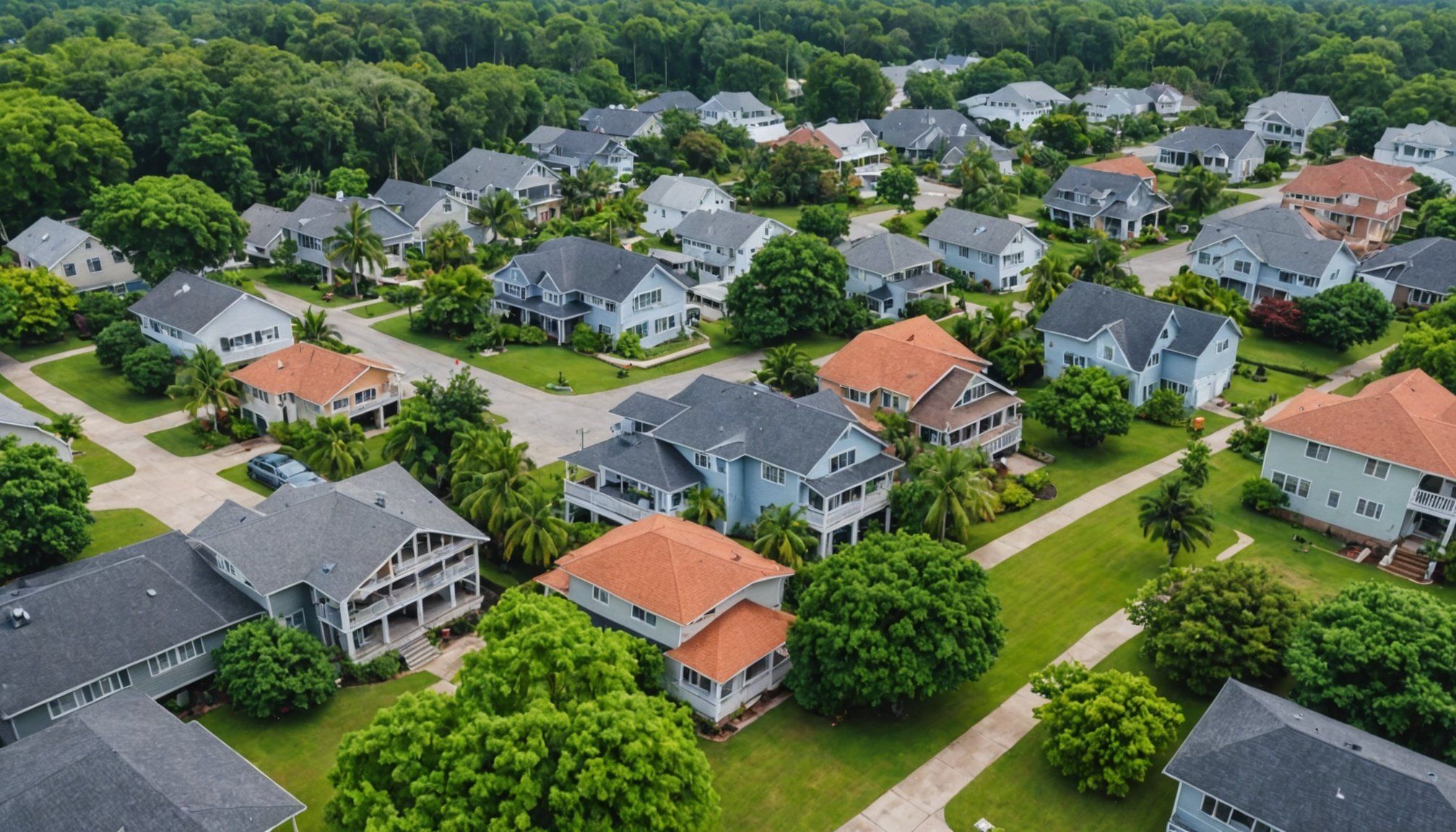Risk Assessment and Identification
Understanding risk assessment is crucial for properties in disaster-prone areas. Each type of natural disaster, such as earthquakes, floods, or hurricanes, possesses unique threats requiring tailored evaluation. Recognising these specific risks involves meticulous examination of historical data, geographical markers, and environmental factors.
For effective property vulnerability evaluation and disaster preparedness, consider the building’s structural components, age, and location. These factors determine susceptibility levels to potential disasters. Advanced methods include using technology like Geographic Information Systems (GIS) to map and predict risk exposure.
Topic to read : Revolutionary Fire Safety Solutions for London’s Senior Populated High-Rise Homes: An All-Inclusive Handbook
Conducting regular risk assessments is integral to long-term property management, ensuring that vulnerabilities are identified and mitigated promptly. These assessments not only help in safeguarding the property but also contribute to formulating effective disaster recovery strategies.
Engaging experts who can provide comprehensive risk analysis is beneficial. They offer insights into the latest techniques and technologies to enhance property safety. In disaster-prone areas, combining these assessments with community-led initiatives can result in a more resilient infrastructure, helping property owners manage and reduce the impact of natural calamities. Through these combined efforts, the daunting task of safeguarding property becomes both manageable and effective.
Also to discover : Fire-Resistant Building Materials: Expert Guide to Safeguarding Your Dream Home
Insurance Options for Disaster-Prone Areas
When it comes to property insurance in disaster-prone areas, selecting the appropriate coverage is vital. Standard property insurance may not adequately protect against natural disasters. For comprehensive financial protection, consider disaster insurance policies that encompass various risks like earthquakes, floods, and hurricanes.
Evaluating insurance options involves scrutinising the specifics of each coverage type. Different policies offer varying degrees of protection based on the disaster type, ensuring you choose one tailored to your property’s needs. For example, flood insurance is essential in high-risk flood areas, while earthquake coverage is crucial in seismically active regions.
Beyond standard coverage, the advantages of having comprehensive disaster insurance include peace of mind and financial security. In the event of a calamity, such insurance can expedite recovery and repair processes, mitigating financial strain. It’s important to weigh factors such as premium costs, deductibles, and policy limits, and consider the long-term benefits versus upfront expenses.
By carefully assessing these facets, property owners can effectively safeguard their investments against the inevitably unpredictable nature of natural disasters, offering a more robust layer of financial protection.
Physical Property Modifications
Incorporating physical property modifications enhances a structure’s disaster resilience, transforming vulnerability into strength. These adjustments focus on enduring the forces of nature, providing essential protection against disasters.
Retrofitting for Earthquake Resistance
Retrofitting enhances a building’s ability to withstand seismic activity. Adding support frames or walls increases a structure’s resilience and reshapes it into a safer environment. Reinforcing the foundation stabilises structures and minimises potential damage.
Flood-proofing Techniques
Flood-proofing strategies protect properties against water-related damage. Elevating buildings on stilts, installing waterproof barriers, and using water-resistant materials effectively defend against flooding. Grading the surrounding landscape ensures proper water run-off, enhancing safety.
Wind-resistant Features
Implementing wind-resistant aspects shelters buildings from high winds. Installing shutters or impact-resistant windows and reinforcing roof structures offers significant protection, transforming properties into wind-resilient structures. Engineers and architects emphasise aerodynamics, reducing the chances of structural harm.
Prioritising structural improvements in disaster-prone areas significantly elevates property resilience. Integrating these reinforcements not only safeguards investments but also contributes to the security and wellbeing of occupants. Understanding property-specific needs and potential natural forces guides the appropriate modifications, assuring a robust defence against impending disasters.
Emergency Preparedness Plans
Creating a robust emergency preparedness plan is crucial for both tenants and property managers in disaster-prone areas. These plans ensure a swift and organised response in the event of a natural calamity, reducing confusion and potential harm.
Developing Emergency Response Plans
An effective disaster response plan involves identifying potential risks and outlining clear procedures for evacuation and communication. Ensure everyone is aware of the escape routes and safe zones. Tailor plans to accommodate various disaster scenarios for optimal effectiveness.
Essential Supplies and Resources
Equipping an emergency kit with essential supplies is vital. Include non-perishable food, water, first-aid supplies, and flashlights. Power banks, radio, and personal documents should also be part of the kit to facilitate communication and identity verification during emergencies.
Regular Drills and Updates
Conducting regular drills is key to familiarising everyone with emergency procedures, building confidence in the plan. Update the preparedness plan to reflect any changes in building structure or occupancy levels. This proactive approach ensures preparedness remains relevant and effective, safeguarding occupants’ safety and wellbeing.
Integrating these elements into emergency planning fosters resilience and readiness, paving the way for efficient disaster management and recovery strategies.
Case Studies and Expert Insights
Delving into case studies and leveraging expert interviews can provide invaluable insights for property owners operating in disaster-prone areas. These real-world examples showcase practical strategies and the efficacy of disaster resilience measures.
Numerous property owners have successfully navigated the complexities of disaster preparedness by implementing innovative solutions. For instance, a community in a flood-risk zone adopted a communal approach by constructing shared drainage systems, reducing individual costs and increasing overall protection.
Expert interviews offer diverse perspectives on overcoming challenges. One architect emphasised the importance of integrating local materials in building designs, as they are often more adaptable to regional climatic conditions. In earthquake-prone areas, using bamboo—a flexible and shock-resistant material—has proven effective.
Learning from past disasters is crucial for shaping current practices. Hurricane-prone regions, for instance, have improved construction mandates requiring elevated structures and stringent wind-resistant standards. These lessons learned are pivotal for developing more robust policies and designs, ultimately enhancing property protection and resilience.
By analysing these case studies and gleaning insights from industry leaders, property owners can make informed decisions, effectively safeguarding their investments against future vulnerabilities.
Practical Checklists for Property Owners
Incorporating comprehensive checklists into your property management routine can significantly enhance disaster readiness. These checklists serve as essential guides, ensuring property owners systematically address vulnerabilities and bolster safety measures.
Assessing Disaster Readiness
A well-rounded preparedness guide should include steps for evaluating potential risks. Begin by identifying the types of disasters likely to affect your area, then assess the current strengths and weaknesses of your property. Regular inspections and maintenance checks are vital for uncovering structural weaknesses.
Securing Properties
Proactive measures are crucial in fortifying a property against impending disasters. Ensure all structural installations, such as shutters and reinforcements, are in excellent condition. Verify that emergency systems, like fire alarms and water shut-offs, are fully operational. It’s also crucial to develop an evacuation plan, tailored to your property’s unique layout.
Ongoing Maintenance and Updates
Consistent maintenance and timely updates underscore a property’s resilience. Regularly revise checklists to reflect new challenges or changes in best practices. This proactive approach not only assures safety but also enhances the property’s longevity and value. By adopting these strategies, property owners can confidently navigate the challenges posed by disaster-prone areas.










